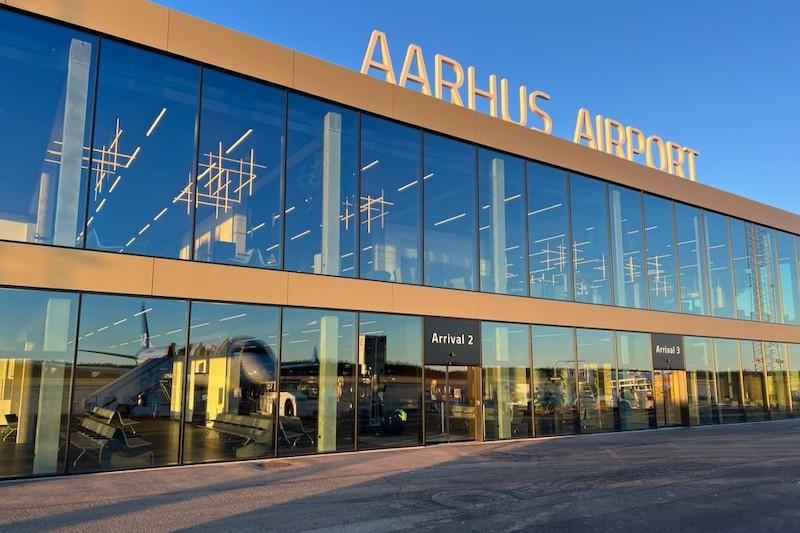
Despite industry-wide constraints, 2024 was one of the strongest years in Aarhus Airport’s (AAR) history. Passenger volumes remained high, surpassing the 500,000 mark and setting the stage for growth in the coming years.
“While we faced some stifling of passenger volume potential due to reduced capacity on major city pairs and connecting routes via our Nordic hubs, we still delivered an impressive performance,” AAR’s senior director of route development and marketing, David Surley, tells Routes. “Norwegian launched its first three routes from Aarhus, adding much-needed capacity, but fleet limitations impacted our existing airline partners.”
Among the standout markets in 2024, Spain and Greece showed solid growth. “In all, we observed 60% year-on-year growth in traffic to and from Spain, on top of record numbers—up to 75% year-on-year in peak summer in July, and particularly noticeable to Mallorca and new destination, Alicante,” Surley says. “Looking forward to this summer, we see a very strong forward trend on Spain again, and booked load factors are already extremely high in relation to the same period last year.”
Alongside the launch of Norwegian’s three services from Aarhus, Scandinavian Airlines (SAS) introduced a new seasonal ski service to Scandinavian Mountains Airport, Norway. Additionally, new airline partner Pegasus Airlines will commence flights from Antalya, Turkey, starting in May 2025.
More News And Analysis From Routes Europe 2025
“Twice-weekly flights will bring sun-hungry Danes to the Turkish Riviera resorts, while it will also suit our ethnic Turkish population in the Aarhus area,” Surley says. “SAS has also expanded capacity on its Copenhagen and Oslo routes, which is a major win for us.
“Copenhagen will see the introduction of Airbus A320s on peak-time flights, linking Aarhus with SAS’ continually expanding network of both short- and long-haul destinations. This brings an increase in capacity of 150% on those rush-hour flights, which will significantly help drive connecting traffic demand.”
However, as the fifth-largest metropolitan area in the Nordic region, with a population of 1.4 million, Aarhus remains an underserved market. “It is plain to see that we are very much in need of fast and frequent hub service to Paris, Frankfurt and Munich,” Surley says. “That said, there are many opportune sunshine destinations still to add to our network, and both Spain and Greece have been booming, while Istanbul, Dubai and a North American hub would make absolute statistical, social and economic sense.”
Surley also emphasizes the opportunity for long-haul expansion. “Greater Aarhus is the largest metro area in north-northern Europe without a direct scheduled service to such global hubs and long-haul markets and certainly the largest population base more than 3.5 hr. drive-time from such direct flights,” he says. “A demand base of 800,000 passengers for North America within just 100 km [62 mi.] of our airport.”
One of the biggest catalysts for AAR’s rising profile was its successful hosting of Routes Europe in 2024. The event brought key airline decision-makers to the city, showcasing Aarhus as both a growing aviation hub and a destination in its own right. Reflecting on the impact of hosting the event, Surley highlights the increased visibility it brought to Aarhus.
“Awareness was the biggest benefit—it’s a once-in-a-lifetime opportunity to have the industry’s most influential figures experience your destination firsthand,” he says. “We are now eager to start ticking off some of those sizeable and available market opportunities.”





